|
|
Expedition
Expedition | People
|
Log - August-7-2003
by Gerhard Behrens and Robert McCarthy
Previous | Next
Back for clams
Robert McCarthy |
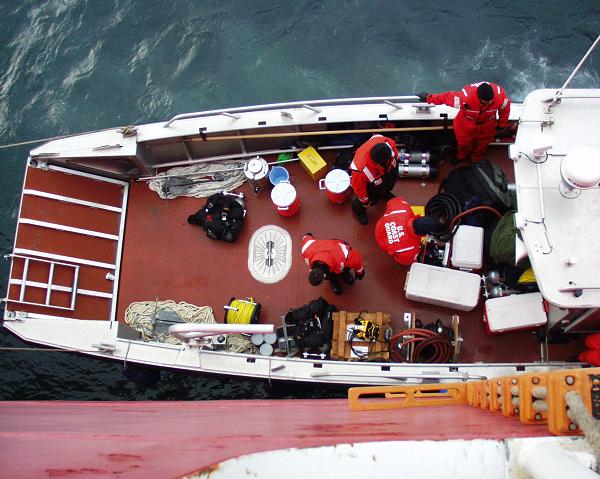 |
The six heroes are back in the water today; first to place another bottom secured, shallow pressure mooring, and second to dive for more clams. Dr. Robie MacDonald and Mary O’Brien, both with the Institute of Ocean Sciences, are interested in the story contained within the clam’s shell. They hope to use the bivalve’s shell as an indicator or throughflow variability dating back to the age of the clam, hopefully 40-60 years. The clam’s growth bands are similar to a tree’s growth rings; the chemistry of the water is recorded within the bivalve’s growth bands like the amount of rainfall is correlated with the width of a tree ring. These bands will conceivably tell the researchers something about the interannual variability of water masses characteristics and freshwater fluxes through the Nares Strait. |
| Cadmium (Cd), atomic number 48, has been correlated with phosphorus (P), atomic number 15, in the world’s oceans. Phosphorus is a nutrient that is usually found in higher concentrations near the bottom. As living organisms die and fall to the bottom, they decompose and enrich the bottom waters with nutrients. Along coasts where upwelling is prevalent, there is high biological productivity because this nutrient rich bottom water is brought to the surface where phytoplankton can incorporate it for growth. The Cd:PO4 correlation is because Cd is a required micronutrient for the bivalves they’re hoping to retrieve. They will also use the Cd:Ca (Cadmium to Calcium) ratio as a useful indicator of the strength of the nutrient rich Pacific contribution to the Nares Straight region. |
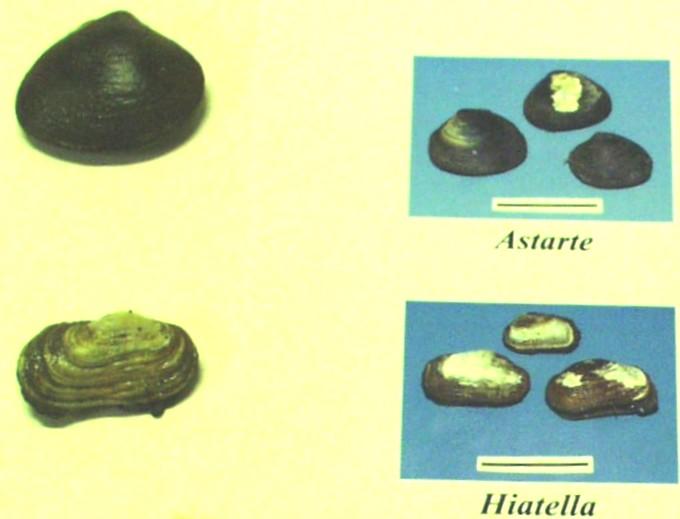 |
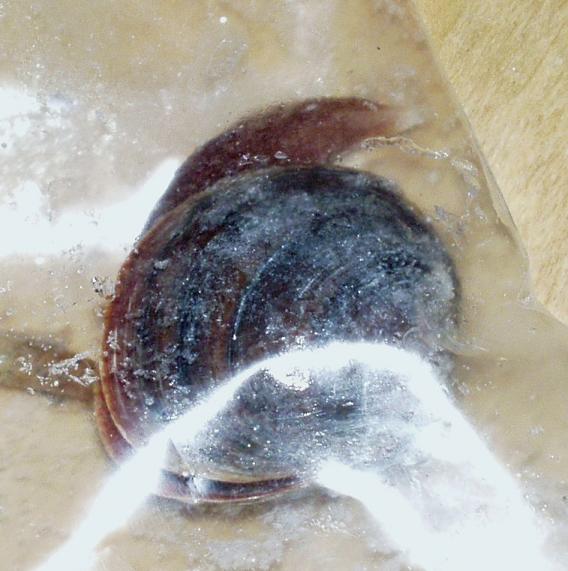 |
Another possible ratio to investigate is the Barium to Calcium (Ba:Ca) ratio, because Barium is enriched in the surface and upper halocline (fresher) waters of the Canadian Basin due to the Mackenzie River. The shells will be cut with a diamond saw, and thin sections will be analyzed with a light microscope. They will also analyze the water taken from the same location that the clams were living to see how the last growth ring retains the water properties. Thus, they hope to reconstruct variations in the circulation through Nares Straight over the life history of the clams. Now all they need are more clams. |
| The Divers must calculate their dive time, so they know how long they can stay down at a certain depth. Remember the log on August 3rd, where we showed that the volume of a cube 4.25 feet on a side contains the same amount of air as a filled diving tank at 3000 psi. Well, this equates to about 76.8 cubic feet, or 2.17 cubic meters, or 2170 liters of air in a full tank. In the U.S. Navy Diving Manual, they state that a person consumes about 20 liters of air per minute. So under normal conditions, warm water and no strenuous activity, a full tank should last about 108 hours. If the dive was solely at 10 meters, (for every 10 meters you descend in the ocean is the equivalent of another atmosphere of pressure), then the diver experiences a pressure of 2 atmospheres. So the air the diver breathes is twice as dense as it was at the surface, so the dive time is cut in half (54 minutes). Continuing down, if the dive was all at 20 meters, then the air being consumed is at 3 atmospheres, so the dive time is only 36 minutes, and finally at 30 meters, the dive time is 27 minutes. These divers’ times are less than that, due to cold water temperatures. But the divers must always be aware of their water depth, their bottom time, and their air supply. |
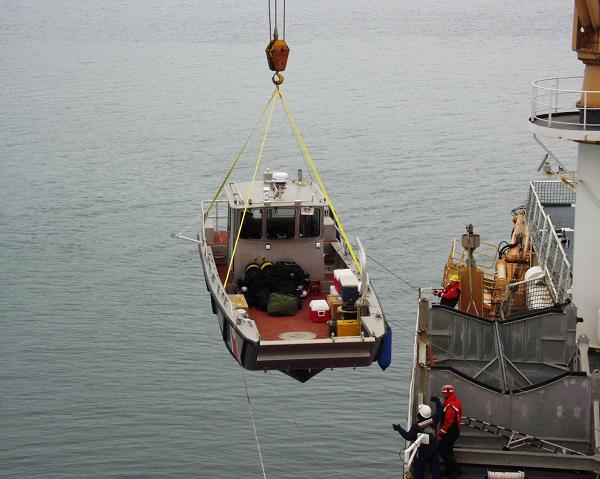 |
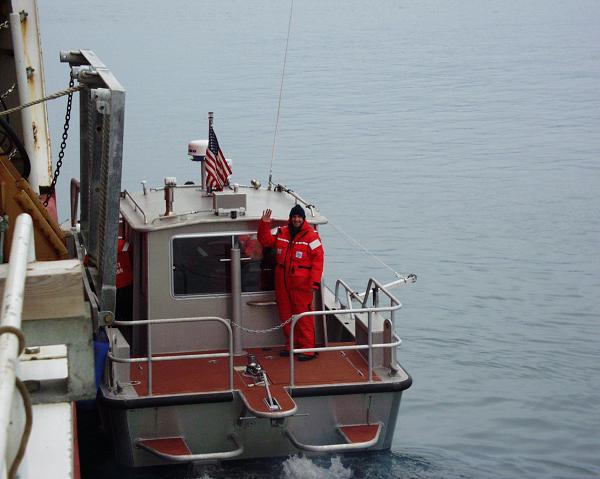 |
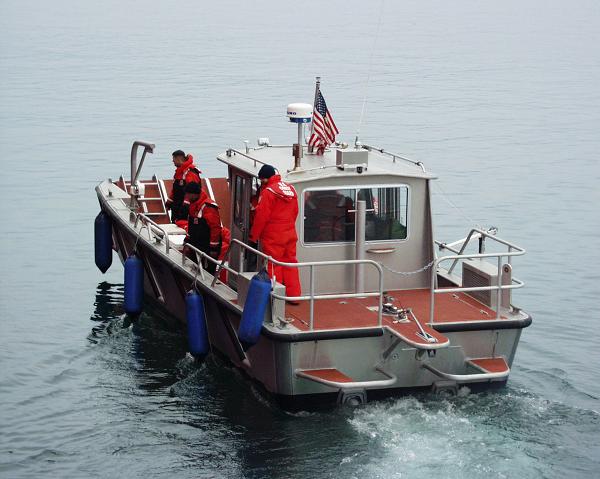 |
The Inuit, First People of the North
Gerhard Behrens |
| Last night, Pauloosie Akeeagok gave us a lesson in a different kind of science: social science, the science of people. Paul is an Inuit, the aboriginal (native) nation that has lived in this northern part of the Canada for thousands of years. He taught us about Inuit history and the Inuit way of life. We are spending lots of time and energy learning about the sea and marveling at the land, so it was wonderful to learn about the people who live with the sea and this land. |
| There is a record of the Inuit living in the Arctic for over 5000 years. Paul described the Inuit people during this time as powerful, independent, and in control of their lives. They lived a nomadic life, following the animals (caribou, seals, whales, bears) that gave them food, tools, clothing. They had a strong belief in their religion. Storytellers passed on history and taught lessons with their stories. The elders had a good feeling for right and wrong in their justice system. The people played lots of games that helped them learn survival skills, taught them patience, and were fun. |
Like the Native Americans in America, people from Europe changed the Inuit culture.
First came explorers. They were looking for a Northwest Passage to India and China, something faster than sailing around South America.
Second came whalers. They hunted the whale for the oil in its brain and blubber.
Third came Christian missionaries. They wanted to teach the Inuit about Jesus Christ and change their religious beliefs.
Traders were the fourth wave. They wanted furs from the fox, seal, and polar bear.
Finally, the Canadian government interfered with the Inuit. They brought a new justice system, explored for natural gas and oil, made Inuit children go away to schools, and moved Inuit people to small towns in the far north. |
| These waves of white people changed the Inuit’s power, independence, and control. New sickness was one problem. Contact with white people gave the Inuit smallpox and measles. Because their religious leads could not cure these new illnesses, many people lost faith in their own religion. Whalers and traders used the Inuit people as workers and showed them how to use new things like guns, traps, and nails. This changed how Inuit people hunted and lived. Many Inuit settled in one area and stopped following the animals. They learned about alcohol and tobacco, too. The Canadian government took over many parts of Inuit life: sending kids to school, making new towns, using their land. |
| Some good things happened, too. The white people showed the Inuit useful, new tools like the guns, matches, and whaling boats. They learned about instruments like the accordion and fiddle. Missionaries developed a written language and brought modern medicines. The Inuit discovered new, simple pleasures like tea and sugar. |
| Over the past 25 years, Inuit leaders have organized themselves and worked with the Canadian government to agree on their rights as the first people to live in the north. The Supreme Court of Canada agreed that the Inuit have these rights. The first step was the 1993 land claims agreements. In 1999, the Inuit people were put in charge of their land, a new territory called Nunavut. No one can go back to the past, and no one can change what has happened. But, the Inuit are on the way to becoming more powerful, independent, and in control. |
| Paul lives in Grise Fiord, a town of 128 people in the southern part of Ellesmere Island, Nunavut, Canada. He attends college in Ottawa, Canada and plans to always live in the north, a land he describes as peaceful and beautiful. |
| Click on Fun Facts to learn about life in Grise Fiord, Paul’s home. Try a google search for Nunavut. |
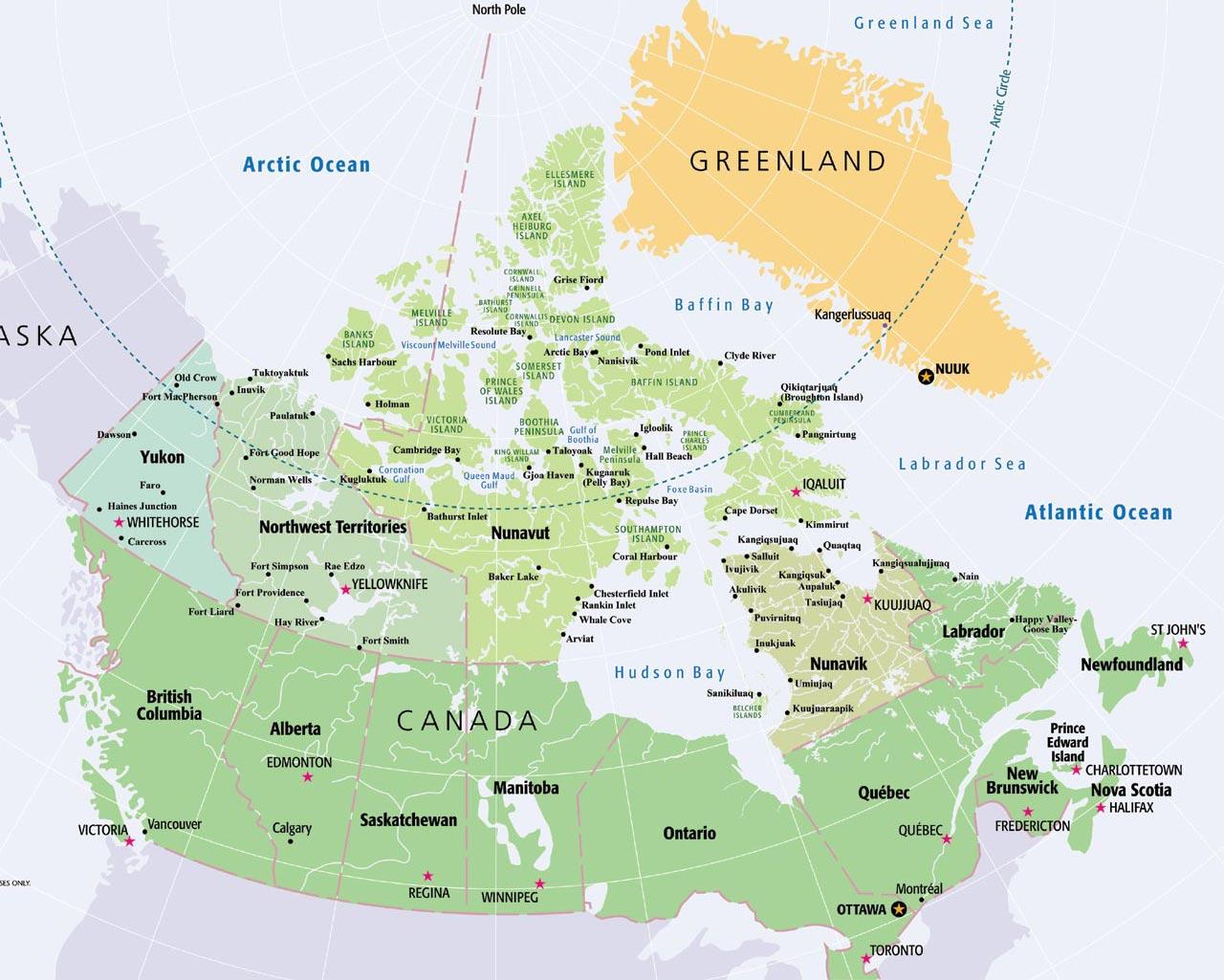
Canada, with Nunavut Territory in the northwest. |
|
